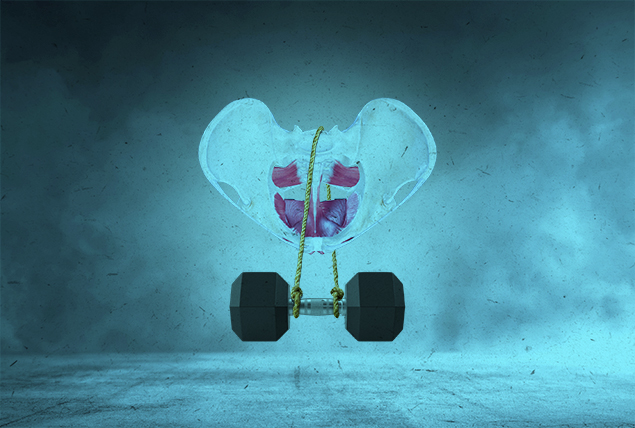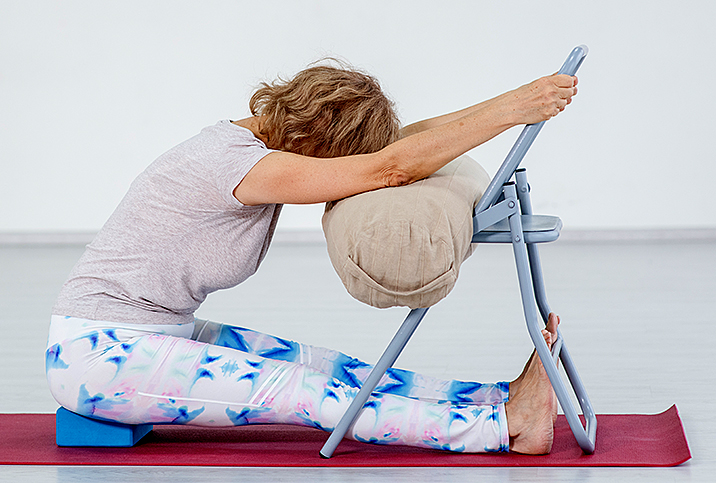What Do Men Need to Know About Their Pelvic Floor Muscles?

Most guys probably don't give much thought to their pelvic floor muscles. When they do, they may not understand the whole picture, thinking those muscles are more of a "women's thing."
The pelvic floor muscles comprise a sling-like sheet of interconnected tissue that runs down the front of your lower torso. This sheet of tissue begins just below the belly button, loops under the pelvis, and comes back up over the rear of the pelvic bone, ending near the tailbone.
These muscles support and protect organs such as the bladder, bowel and internal sexual organs. They help keep everything in place and provide the muscle support needed to help you urinate, defecate and fornicate. They also help you:
- Maintain your core balance
- Walk
- Support your back when you lift heavy objects
Kegels are the best-known pelvic floor muscle exercises. They are much touted for men, too. You've probably heard and read the breathless, pop-sciencey stories about how Kegel exercises can help guys achieve stronger erections and control their urine flow better, among other attributes.
That's true for some men; for others, it's not.
How do pelvic floor muscles work? What do they do? Who is a good candidate for strengthening them with Kegels, and who needs to chill out and learn to relax them?
A cautionary Kegel tale
How could exercising the pelvic floor muscles be the wrong thing to do? Let's examine the story of the prostate cancer patient who was doing Kegel exercises all day, every day after his prostatectomy.
"He was requiring injections in his penis for erectile function, and I think he was leaking urine as well," said Amy Pearlman, M.D., a men's health specialist and co-founder of Prime Institute in Fort Lauderdale, Florida. "So I sent him to pelvic floor therapy to learn how to do [Kegels] appropriately. After that, he didn't require [injections] anymore for erections."
He was overdoing the Kegels, which made his symptoms worse, Perlman explained. Kegels done incorrectly or too frequently can cause symptoms to worsen in some men.
For men with the right symptoms, learning to work with and enhance their pelvic floor muscle support can alleviate all kinds of problems, including the following:
- Erectile dysfunction (ED)
- Urinary incontinence
- Penis or testicle pain
What is pelvic floor dysfunction?
When something goes wrong in the pelvic floor, it can manifest in various ways. Some of those problems might call for strengthening, and some might not. The pelvic floor muscles can fall victim to the twin scourges of modern life: losing muscle tone through a lack of exercise and carrying too much tension in your muscles.
Both of these issues can manifest in the pelvic floor muscles, depending on the person.
"This is a generalization, but often we can see more tension in the younger groups," said Natalie Kruse, D.P.T., the senior physical therapist at the University of Iowa Hospitals & Clinics. "There isn't as much that's been an insult on their pelvic floor unless they've had surgery or radiation if they had cancer in their 20s. But for the most part, I'd say that if there is pelvic floor dysfunction in younger guys, there's a lot of tension-related issues."
How does pelvic floor dysfunction present?
Knowing the pelvic floor muscles are closely intertwined with numerous bodily functions, it shouldn't be surprising that if the pelvic floor is experiencing stress, pain can manifest almost anywhere in the lower torso.
Think of it this way: This muscle complex holds your guts in place and helps your lower back muscles support you when you stand, walk or lift, but it also houses the muscle openings through which you defecate, urinate and ejaculate. Pelvic floor muscles are intimately connected to all of those apparatuses, and the whole area is run through with numerous nerves that connect to the spine.
The tricky part for therapists in working with patients with pelvic region dysfunction and pain is that the pelvic floor muscles aren't usually acting alone. The symptoms of pelvic floor dysfunction often present as referred pain—that is, pain that appears to originate in the scrotum or the penis—or as difficulties with erections or incontinence, even though the symptoms actually stem from the pelvic floor muscles.
Patients often visit Kruse's office because of pain. It can manifest anywhere from the belly button to the mid-thigh, not concentrated in the pelvic floor.
"It can refer to any part in that region, including the genitals," she said. "So that can be a pain they have with sitting, moving, lifting—any kind of activity. They also might have some sort of sexual, bladder or bowel dysfunction along with it, so that can be anything from leakage to difficulty urinating to constipation or fecal incontinence or leakage. They could also have ED, premature ejaculation, pain with ejaculation; anything that can cause some sort of pain or dysfunction with any of those areas."
Conclusions
More men seem to be learning about how their bodies work, including how the pelvic floor muscles influence so many systems. A little knowledge can be a dangerous thing, however.
Identifying whether the patient has tension in his pelvic floor or if the muscles are too slack and need to be strengthened involves close consultations with a pelvic floor therapist who specializes in males.
Plus, learning how to do Kegels is best done with an expert, not from a wikiHow page.
"About 30 percent of people are doing Kegels wrong," Kruse said.
The first step is to talk with your healthcare provider to see if your other symptoms might potentially be related to pelvic floor muscle issues, then get a referral to a specialist.
You should have a doctor you see regularly. Fortunately, telehealth makes it easy to connect with a provider who can answer your questions and evaluate your situation, often through video visits. Many of them offer same-day appointments.
Giddy Telehealth is an easy-to-use online portal that provides access to hundreds of healthcare professionals whose expertise covers the full scope of medical care, including men's health.


















